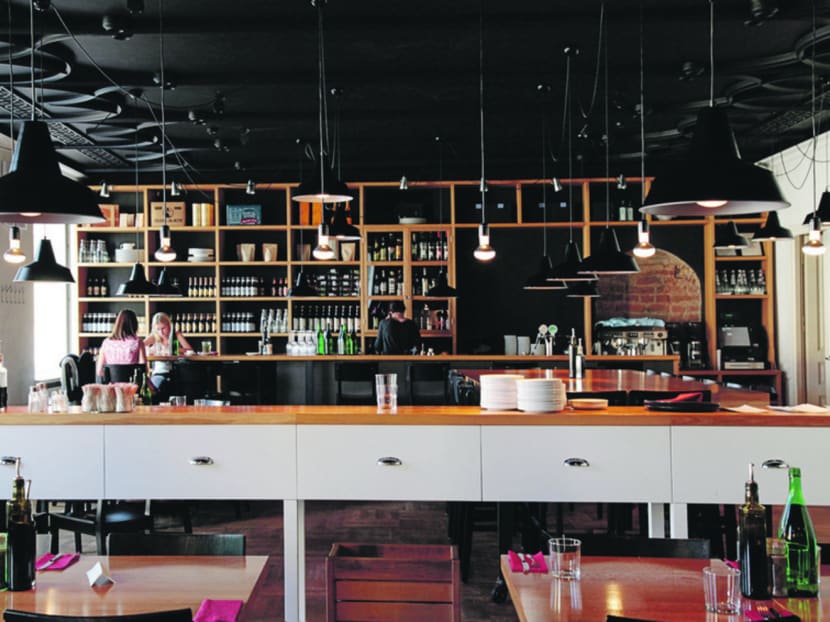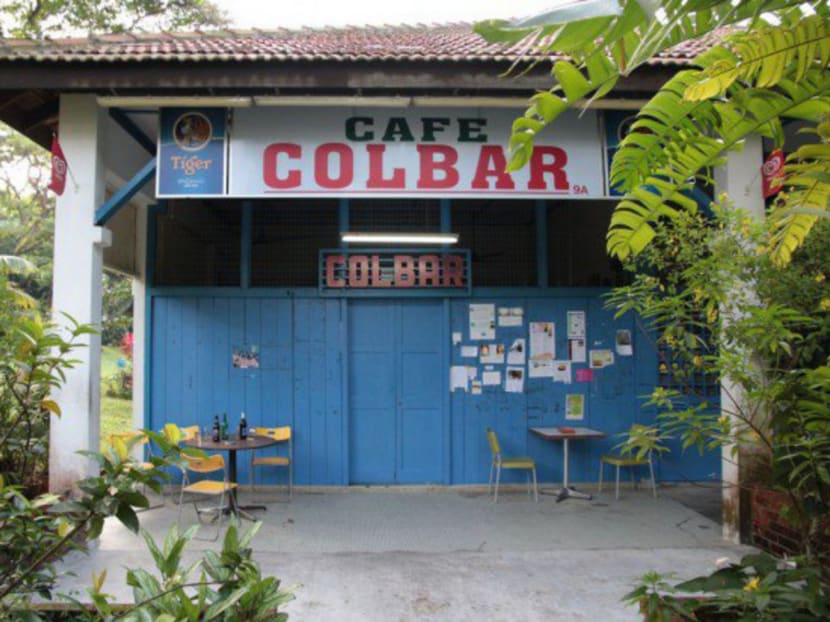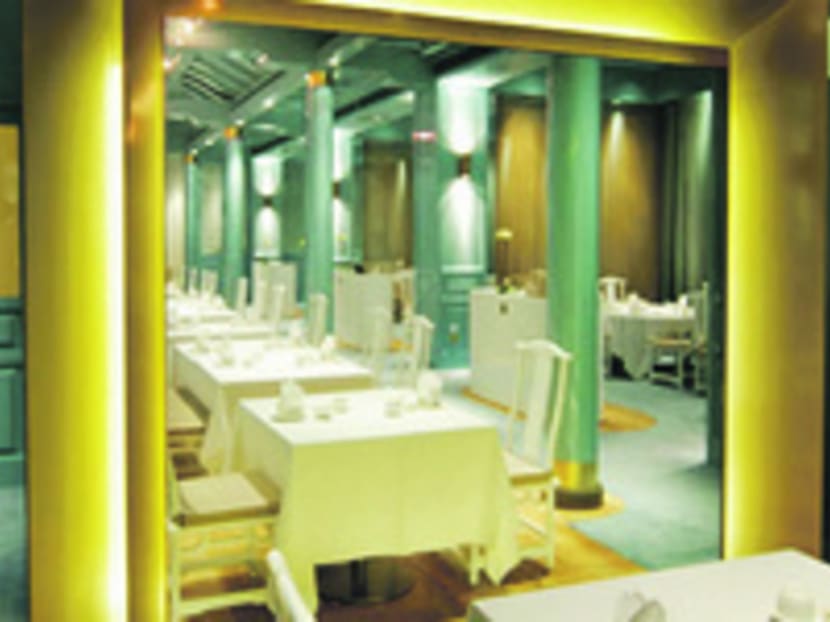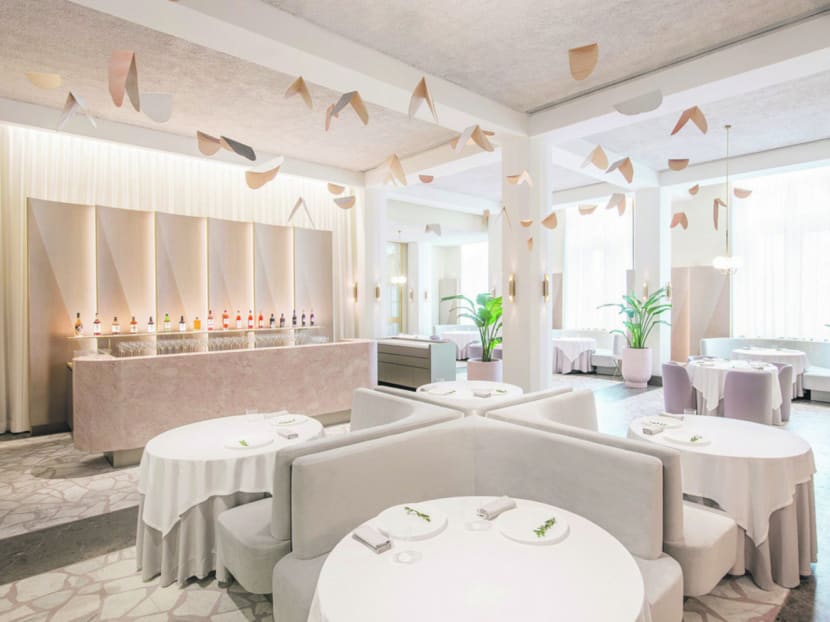Why do so many cafes look the same?
SINGAPORE — The cafe scene here is never more bustling than during the weekends. Coffee houses are typically packed with customers tucking into artfully plated brunch dishes while others sit at counters, watching their artisanal java percolating.




SINGAPORE — The cafe scene here is never more bustling than during the weekends. Coffee houses are typically packed with customers tucking into artfully plated brunch dishes while others sit at counters, watching their artisanal java percolating.
I admit I’m one of those people. I go to one too many coffee joints and cafes for my own good. And I have come to notice every other cafe that opened in recent years seem to exude similar aesthetics: Bare, stripped walls — preferably with raw exposed brick tiles; blonde wood tables (interchangeable with marble-topped ones for better Instagramming effect); dark wooden or cement screed floor, track light fittings or hanging Edison lightbulbs.
The entire space feels deliberately put together, a masterful mise en scene with supporting actors such as flowers on the tables and industrial stools (the Carlisle metal stools are a particular favourite) never out of place. Insert a couple of other props — copies of Kinfolk or Cereal magazines; lush-looking cakes and oozy eggs; the all-essential coffee — and you’re set.
I’m not imagining the phenomenon. I’ve quizzed several friends who rattled off names of cafes which look and feel similar. “But I like it!” enthused one coffee and cafe junkie. “I can spend the whole day in these cafes.” Another coffee pal valiantly defended that even though these cafes may seem the same, they are actually and clearly different. “You know, there’s one that feels more like a greenhouse — with lots of natural light,” she remarked of a popular one in the Bras Basah area. “There are also cafes that are more open in their concept, you can see what’s outside in the neighbourhood, while others feel more like a hideout.”
This is something that is not only prevalent in Singapore. Many of the third-wave coffee joints around the world sport this look — plus and minus a few things. I’ve sought out Ristretto Coffee in Chiang Mai and Mean Coffee in Stockholm, and frankly, they can be transplanted anywhere. It must mean something when there is such a mass-produced global effect. To quote Joseph Stalin, “quantity has a quality all its own” — and it looks like yuppies and hipsters the world over (guilty as charged) all want the same things even when we proclaim we want to experience something different, local and unique.
Feeding the system
To help make sense of this, I went to award-winning designer, and founder and director of homegrown firm Ministry of Design (MOD), Colin Seah. Seah shot to fame when he designed hotelier Loh Lik Peng’s now iconic New Majestic Hotel in 2005, and his take on the shophouse hotel was almost revolutionary in daringness and foresight more than a decade ago — leaving the ceiling boards exposed; murals stretching across bedroom walls; and free-standing open bathtubs in the middle of a room. These elements have become commonplace these days in hotels.
Seah acknowledged that it was probably easier to be more distinctive in the past, and replication is something that affects every creative industry — from fashion (where high-fashion designs on runways are seen in high street brands barely a month after debuting) to interiors. “The same markers — be they the exposed brick wall or industrial lamps — get used over and over again,” Seah observed. “We’re subscribing to an image of what we think a cafe should be and have.”
No doubt social media and the Internet have given a massive boost to the confluence of good taste. While people used to thumb through influential design titles such as Wallpaper or Dwell for ideas and direction, their reach and ubiquity are nowhere near the level and penetration of mediums such as Instagram and Pinterest, which are available on hand 24/7.
The Internet has also sped up and intensified the process of learning to appreciate and crave the very aesthetics heavily propagated through these mediums. And the cycle continues — it extends from the furniture you want for your dream house to the spaces you already hang out at. That’s right, at cafes.
“Since this is what the people want, it makes perfect business sense to cater to it,” said Seah. “Nobody likes to fail. If this decor is safe, it works, it suits everyone, then why not? There is a disincentive to be different although I find this argument counter-intuitive because in a market saturated with cafes, a business should try to stand out by being different.”
The economic pressures of being a small cafe owner add to this conundrum: Why invest so much in doing up the decor when there are other costs to take note of? “The industrial look is not too expensive — you don’t need to do too much to achieve it. Being kind of rough around the edges is part of its charm,” explained Seah. Coupled with this fact is that many of the furniture and fixtures used to achieve the hipster look are now mass produced and accessible — further lowering the cost of entry.
Banal universality
Then again why are such hipster, industrial aesthetics so popular all over the world? Are these hipster cafes with their artisanal coffee — gasp — the new Starbucks? We seek them out, especially when in a foreign city, because we want to feel right at home again.
Seah agrees there is universality about this look. “It’s at once banal, familiar and comforting — and I think there’s a deeper reason why everyone wants that,” he said, adding that the ubiquity of hipster cafes of today is a symptom of a larger issue.
“Let’s look at what cafe culture represents — making coffee, having a conversation, beautiful objects and furniture around you, looking out of the window and dreaming — an ‘authentic reality’ away from technology,” he posited.
Lending credence to this argument is the corresponding rise and interest in craftsmanship and slow living that are part of the third-wave coffee movement. And this yearning for a break is felt all the more acutely in ceaselessly busy cities such as Singapore, where such cafes have mushroomed.
It is also no surprise that hipster cafes have even gone right into the heartlands — in Bedok, Toa Payoh, Hougang — the way fast food and chain fashion stores did. They are the post-modern and stylised sanctuaries that have evolved from Starbucks. In other words, coffee is the new Coke. And we all want to belong in the McDonald’s it comes from.
***
Need a break from hipster-, industrial-looking cafes? Colin Seah tells us his three spots in Singapore which he loves:
1. Colbar, Portsdown Road
“Something that looks old that’s actually old. It’s not just faux aged or an overly sentimental homage. Authenticity like this is hard to come by. It’s casual, laidback and a little rough round the edges — it’s an original blast from the past. I remember hanging out here more then 25 years ago. They moved it from around the corner but it’s still in pretty much its original neighbourhood.”
2. Odette, National Gallery Singapore
“Perfectly balanced space that’s miraculously calming yet scintillating in equal parts. It creates the perfect atmosphere for course upon course of edible art. In the daytime it’s just heavenly.”
3. Royal China, Raffles Hotel
“Ok, it’s designed by MOD so I’m partial to it, of course! But the Tiffany blue-meets-chinoiserie space creates a mod-Asian vibe that is delightful to be in and transforms the dowdy Chinese dining experience. Years on, it’s still unique.”





